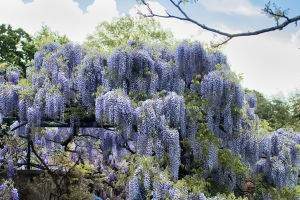Mint is more than just a common herb we might casually toss into tea or desserts. If we take a closer look, we’ll find it has a fascinating history, strong flavors, and uses that stretch from the kitchen to traditional remedies.
We can even use mint to refresh our homes, boost our moods, or try small experiments in gardening. Let’s explore how this small plant can make a big impact in our everyday lives.
What Mint Really Is
Mentha canadensis, commonly known as mint, belongs to the Lamiaceae family. It naturally grows in East Asia, Southeast Asia, Malaysia, central Siberia, and North America. Interestingly, this species is likely a natural hybrid between wild mint and European mint. Its scientific name “canadensis” literally means “from Canada.”
The plant grows to about 30–60 centimeters tall. Its stems carry opposite leaves, and its flowers bloom in pale purple shades. Mint favors moist environments like marshes or lake and river edges, but it cannot grow directly in water. The flowering season is from July to September, which makes summer the best time to appreciate its delicate blossoms. Observing a patch of mint in full bloom can feel surprisingly calming and almost therapeutic.
Mint’s Scent and Flavor
Mint leaves are packed with aromatic oils that give off a refreshing scent, similar to peppermint. We can harvest these leaves throughout their growth period. Once dried, they are perfect for creating mint jelly, tea, or adding flavor to pastries. The fragrance alone can brighten up a room, and we can even crush leaves to add a fresh scent to drawers or small spaces.
For those who love drinks, mint can make a simple infused water feel like a mini luxury. Just drop a few fresh leaves into a glass of water, and the aroma instantly lifts our spirits. Even placing a small bunch near a sunny window can fill our homes with a natural, uplifting scent.
Traditional Uses We Can Try
Long before modern uses, mint played a role in everyday remedies. Indigenous people in Canada used mint tea to soothe bad breath, toothaches, and even hiccups. Today, we can enjoy the same benefits by brewing a simple cup of mint tea to relax after a long day or to aid digestion after meals.
We can also experiment with mint in simple skincare routines. Rubbing a few fresh leaves gently on the skin can provide a cooling effect, especially on hot summer days. By exploring these small uses, we begin to see how this plant quietly supports our well-being in multiple ways.
Gardening and Placement Tips
We don’t need a lot of space to grow mint. It can thrive in garden beds, planters, or indoor containers as long as it receives enough light and the soil stays damp but not soggy. Rotating the container every few weeks helps all leaves get equal exposure to light.
Mint spreads quickly, so giving it room to grow or dividing it into multiple sections prevents overcrowding. We can also try companion planting with other herbs like basil or thyme. Not only does this make the garden look lively, but it can also help with natural pest control. Watching mint take over a corner of the garden is surprisingly satisfying, reminding us of nature’s quiet persistence.
Fun Ways to Use Mint
Mint isn’t just for tea or desserts. We can add fresh leaves to salads for a cool flavor twist, or sprinkle chopped mint over fruits like watermelon and strawberries for a refreshing touch. Mint-infused ice cubes can brighten up water or lemonade, giving a small but delightful surprise with every sip.
Its pleasant scent also makes it useful in DIY natural air fresheners. We can simmer mint leaves with lemon peels in water on the stove for a fresh aroma that fills the kitchen. For wildlife enthusiasts, mint can even serve as a lure when observing or studying small mammals like foxes and lynxes, reflecting its traditional practical uses.
Safety and Sustainability
Although mint is easy to grow and versatile, we should avoid overharvesting. Picking leaves responsibly ensures that the plant continues to flourish year after year. We can also compost leftover stems and leaves, creating a natural cycle that supports our garden’s health.
By caring for mint thoughtfully, we not only enjoy its benefits but also maintain a sustainable approach to growing herbs. Even experimenting with simple propagation from cuttings can give us a continuous supply of fresh mint for months, letting us feel connected to the plant’s growth.
Savor the Freshness!
Next time we see mint growing near a river, marsh, or in our garden, let’s pause to appreciate its scent, taste, and history. From refreshing teas to aromatic gardens and creative kitchen uses, this little herb adds more to our lives than we might expect. By understanding its needs and exploring its uses, we can enjoy mint in ways that feel both traditional and modern. Every leaf reminds us that even small plants can bring big joys into our everyday routines. Let’s enjoy the simple wonders of mint together!
Health Benefits of Mint leaves | Boost Digestion Naturally | Mint for Bad Breath | Power of Mint |
Video by Yoga & You


